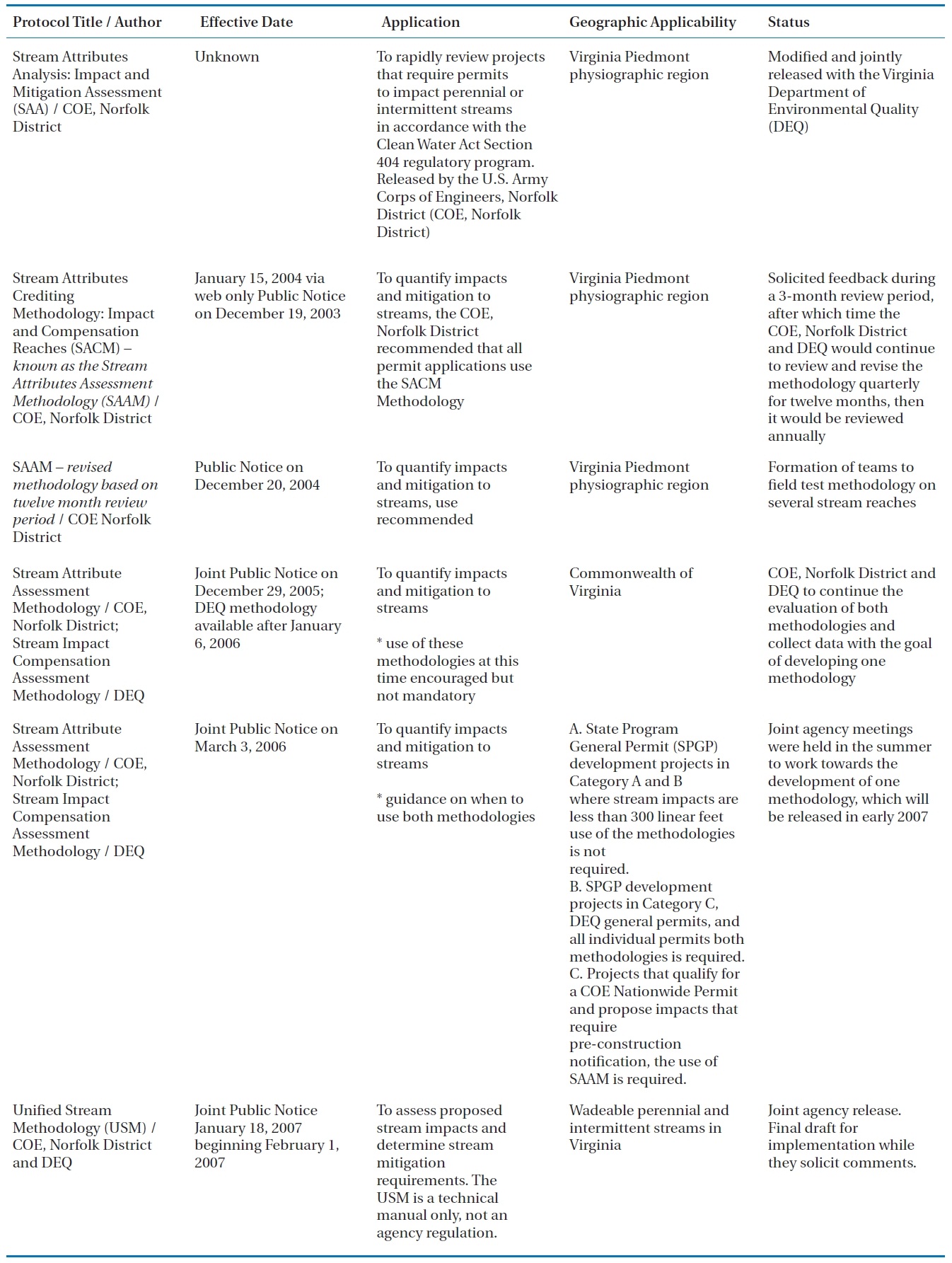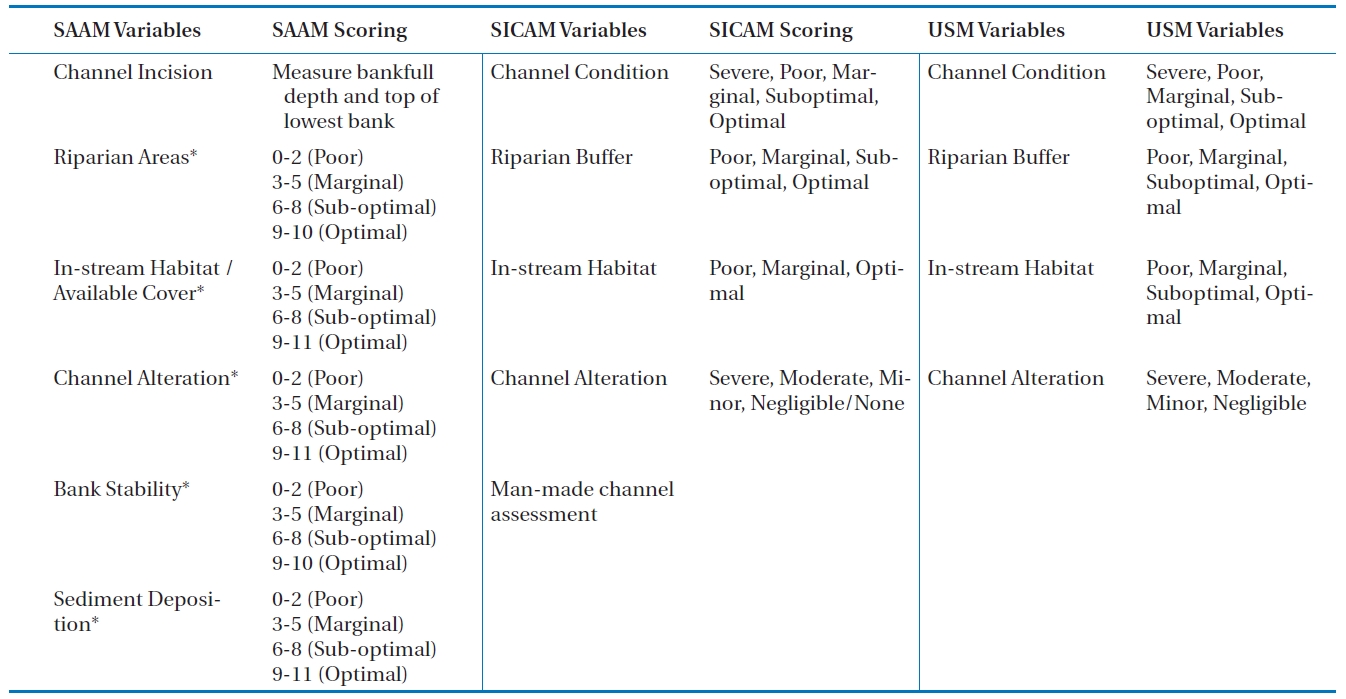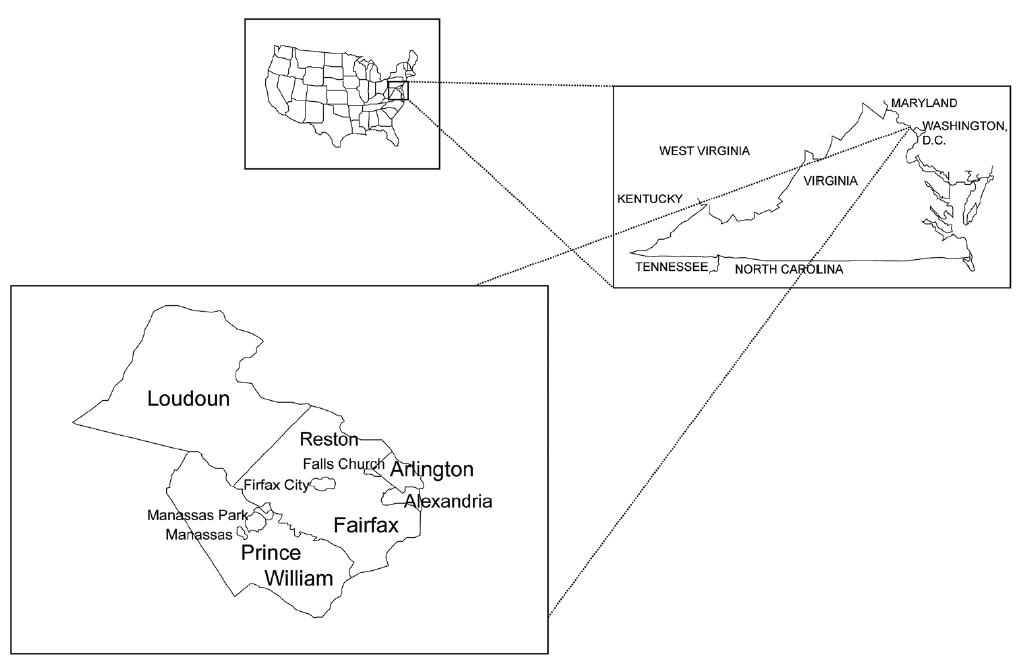



Streams provide economic, social, cultural and environmental values to society [1, 2]. These values however, have been compromised due to rapid population growth and land use changes that have led to a decrease in forests and wetlands and an increase in impervious surfaces such as roads and buildings. Land use changes impact streams’ physical, chemical, and biological processes by altering stream flows and increasing the streams’sediment loads [3-6]. These factors can lead to a decline in the stream quality [7, 8].
Stream restoration as a discipline has developed primarily as a result of wetland permitting processes requiring in-kind replacement of degraded or “impacted” streams [9]. In 1996, the Army Corps of Engineers (COE) issued Nationwide Permit 26(now expired) which was at the time the only permit that addressed the improvement of impacted streams [10]. In 2002, all Nationwide Permits were reissued, and Nationwide Permit 27 was modified to address not only permits for wetland and riparian restoration but also stream restoration activities [10]. Under Section 404 of the Clean Water Act and Section 10 of the Rivers and Harbors Act of 1899, the COE is authorized to approve activities in the waters of the United States and directed to protect the nation’s aquatic resources. Perhaps due to the link between COE permitting and stream restoration, physical stream restoration practices often focus on meeting the permit requirements and not on the long-term ecological viability of the streams [9].In addition, as part of the permitting process for stream restoration projects, the COE, Norfolk District and the Virginia Department of Environmental Quality (DEQ) have developed stream assessment methodologies to determine the required level of mitigation.
A stream restoration project which is designed to improve a reach of stream independent from a development project is known as a ‘voluntary restoration.’ A stream restoration project which is designed to offset the impacts to a stream from a development project is known as ‘stream mitigation’ [11]. Successful voluntary restoration projects should result in ecological net gains, whereas stream mitigation projects should result in no net loss of ecological conditions [11]. While stream restoration holds the promise of improving the stream quality, restoring a stream to its pre-disturbed state may not be possible as a result of widespread watershed changes [7, 12]. Moreover, the limited knowledge of the complexity and dynamics of streams has led to a lack of sound benchmarks for measuring the outcomes of stream restoration [13]. The restoration community still lacks a set of agreed success criteria of the kind which are needed for stream evaluation and monitoring. To ensure that the manipulation of streams leads to improved stream conditions in the future,lessons learned from current and future projects should be gathered and shared with the community.
This paper reviews several important components of stream restoration through a literary review and a case study. The goal of this study is to provide the stream restoration community and the public policy sector with an informational foundation for understanding and making sound decisions about stream restoration.
This paper reviews the available literature on stream restoration assessment methodologies, classification systems, biological integrity, success criteria, monitoring, evaluation and adaptive management. This information is primarily from Virginia,but also from across the United States. Northern Virginia (Fig.1) was selected as the case study area due to the recent efforts of the city of Reston, in Fairfax County and of Fairfax and Arlington Counties in the development and use of watershed management plans to address stream improvements. Data on 25 stream restoration projects in the study area of Fairfax County was collected from the National River Restoration Science Synthesis (NRRSS)database [14]. Data was obtained on a further four stream restoration projects through interviews with project managers. The authors participated in a stream assessment training session to learn to the best way to apply the assessment methodologies discussed in this paper. Personal and phone interviews were held with 24 individuals employed by federal, state and local governments, community associations, environmental consultants,non-governmental organizations and academics.
3.1. Stream Assessment Methodologies
Stream assessment methodologies have been developed for use with the current permit system, watershed and land use planning, water quality and stream habitat reporting and stream restoration. A recent study [15] analyzed more than 50 final and draft regulatory and non-regulatory stream assessment and mitigation methodologies applicable at a national or state level. The study included two methodologies developed for Virginia, the Stream Attributes Analysis: Impact and Mitigation Assessment(SAA) and the Fairfax County Stream Physical Assessment Protocols(Table 1). The COE in Norfolk District developed the SAA to rapidly review projects that impact upon perennial or intermittent streams and therefore require permits in accordance with Section 404 of the Clean Water Act. The SAA methodology scores six variables: riparian condition, watershed development, channel incision, bank erosion, channelization and in-stream habitat.Each variable is then assigned a numeric value ranging from 0 (poor) to 1.0 (excellent) [15].
In Virginia, the interaction between the COE, Norfolk District and the DEQ produced several methodologies for evaluating stream conditions. In late 2003, the COE and Norfolk District,in collaboration with the DEQ, released a revised version of the SAA called the Stream Attributes and Crediting Methodology:Impact and Compensation Reaches (SACM). This document was revised and released as the Stream Attributes Assessment Methodology(SAAM) in 2005 (Table 1). The SACM, which excluded watershed development as a variable, was modeled on the EPA Rapid Bioassessment Protocols [16] and was designed to determine overall stream condition and the necessary mitigation in the Piedmont physiographic region [17]. The DEQ has also developed a methodology, the Stream Impact Compensation Assessment Methodology (SICAM). This is used to determine the overall stream condition and the need for stream restoration
[Table 1.] History of the development of a stream assessment protocol in Virginia

History of the development of a stream assessment protocol in Virginia
rangprojects across the State [18]. In 2006, the DEQ, the COE and Norfolk District encouraged the use of both methodologies and informed the public of the conditions under which these methodologies should be used. Then, in mid 2006, the DEQ, the COE and Norfolk District reversed their course and entered into discussions to work towards the development of the Unified Stream Methodology (USM). A final draft of the USM was released for public comment on January 18, 2007 (Table 1).
3.1.1. SAAM and SICAM field application
In the spring of 2006, the authors participated in a stream assessment training session to learn how best to apply the SAAM and SICAM methodologies in the field. The team assessed a site located in Loudoun County, Virginia, consisting of eight streams and 17 stream reaches totaling 2,183.4 linear meters before any environmental impact had occurred. The stream reaches were classified by stream type, with ten intermittent streams, six perennial streams and one stream for which the upstream section was classified as intermittent and the downstream section as perennial. In addition, the stream reaches were classified by the stream order, with thirteen 1st order and four 2nd order streams[19]. Observations for each variable were logged in the field and later entered into forms. For the SAAM, each variable is evaluated and rated on a numerical scale, ranging from zero to ten for two variables and from zero to eleven for three variables. In both cases the highest value is the most favorable condition for each stream reach [16]. For the SICAM, each variable is evaluated and rated on a qualitative scale from severe to optimal (Table 2).
The application of the SAAM and SICAM methodologies varies.Firstly, the SAAM field form is an electronic spreadsheet based on Microsoft Excel and includes the calculations necessary to determine the Reach Condition Index (RCI), which is an

Comparison of the Stream Attribute Assessment Methodology (SAAM) Stream Impact Compensation Assessment Manual (SICAM)and Unified Stream Methodology (USM) Variables and Scoring
overall numeric indicator for the stream [17]. The evaluator only needs to enter the data collected into the spreadsheet, with each stream reach requiring its own form and being scored separately.For example, one stream reach (86.1 linear meters) observed during the field study scored a pre-impact RCI of 5.02. Because this stream will be impacted, a restoration project in the same watershed must be identified as a proposed stream for the mitigation.The mitigation stream must also be assessed to determine its RCI and then the proposed mitigation plan is applied to the SAAM to determine the new RCI for the stream post-restoration.The difference between these two RCI values is known as the mitigation lift RCI. To determine the linear meters of restoration required, the RCI of the impacted stream, in this case 5.02, is divided by the mitigation lift RCI and then multiplied by the linear meters of impact, in this case 86.1 linear meters. The number of linear meters calculated represents the number of linear meters of restoration required for the 86.1 linear meters of impact.


